
كتالوج سبائك الفولاذ
كتالوج سبائك الفولاذ
انقر على أي منتج لعرض التفاصيل
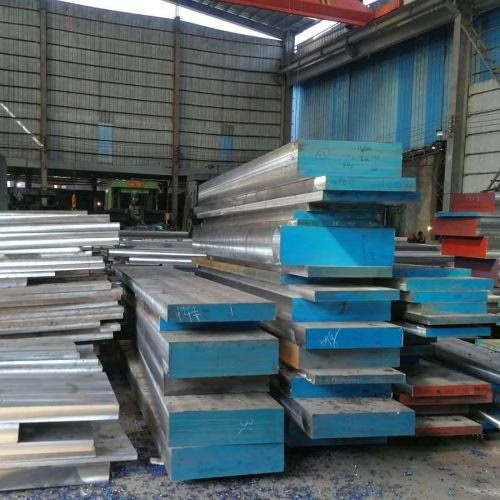
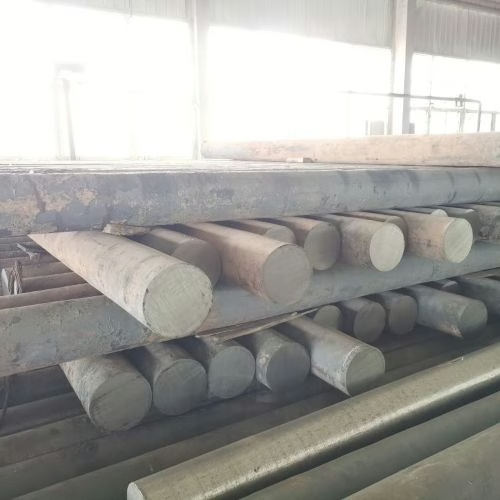
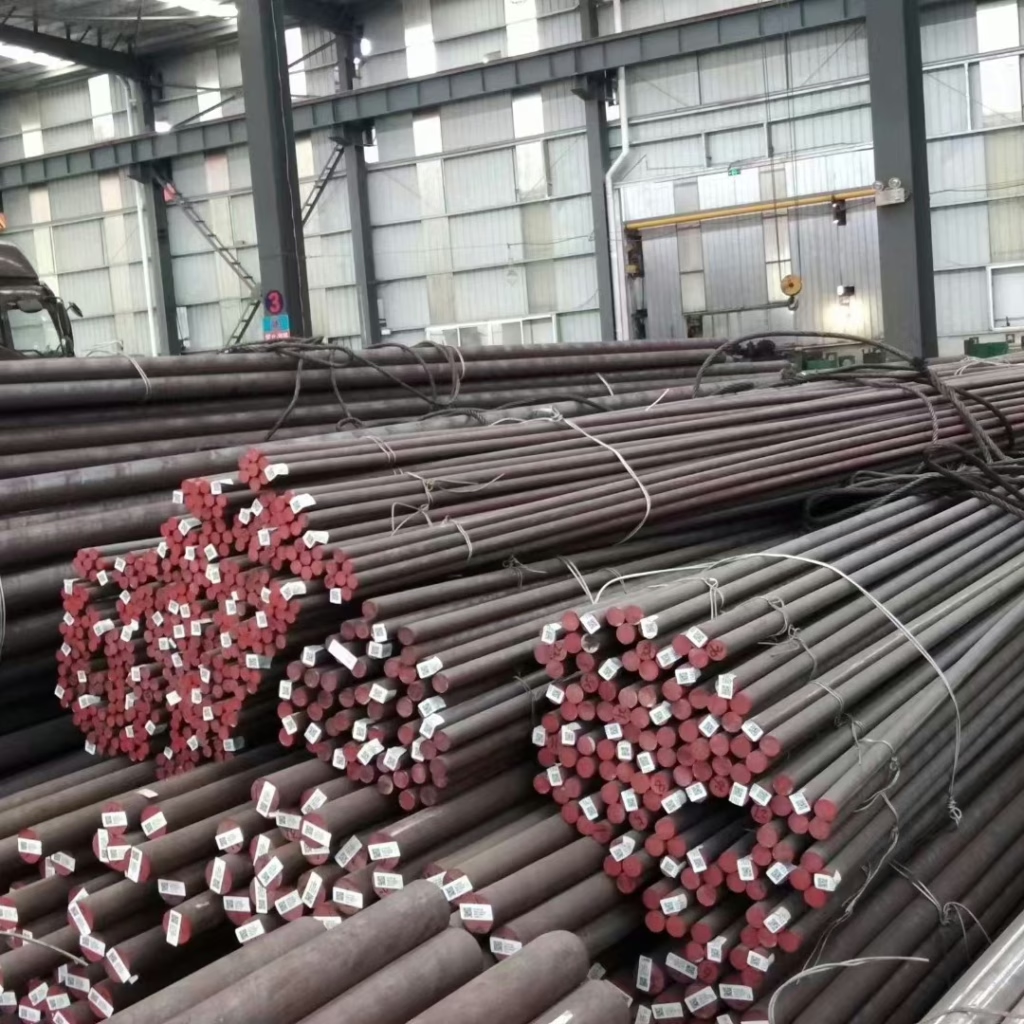
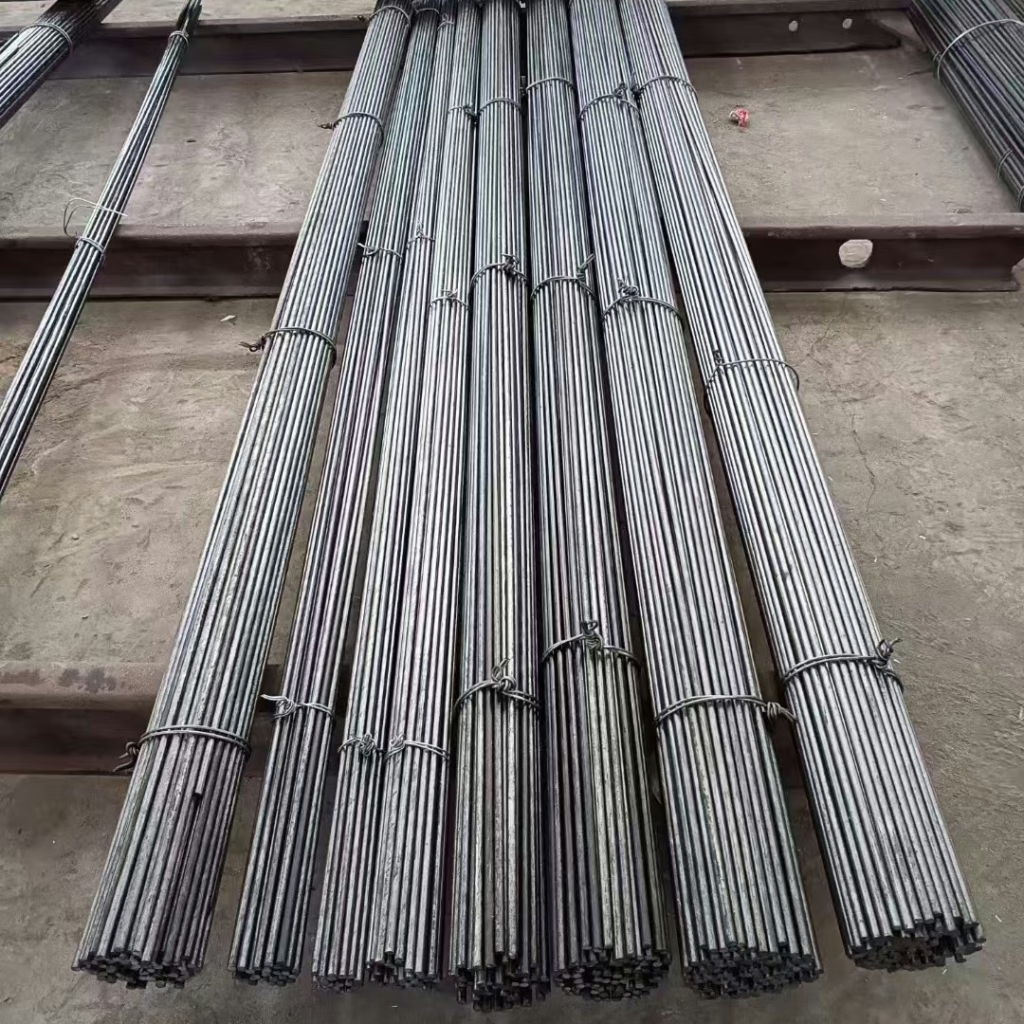
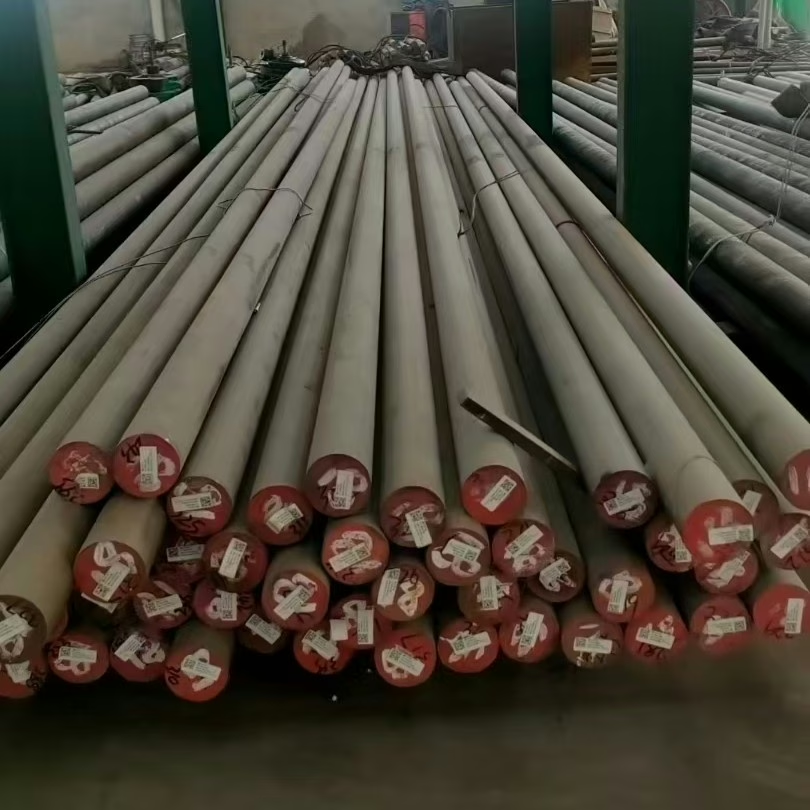
ما هو الفولاذ السبائكي؟
الفولاذ السبائكي هو نوع من الفولاذ يُكتسب الخواص الميكانيكية المطلوبة بإضافة عنصر واحد أو أكثر (غير الكربون). بخلاف الفولاذ الكربوني العادي، الذي يتكون أساسًا من الحديد والكربون ويحتوي على كميات ضئيلة فقط من العناصر النزرة مثل المنغنيز والسيليكون والفوسفور، يُحسّن الفولاذ السبائكي خصائص أدائه بإضافة عناصر محددة ضمن نطاق مُتحكم فيه.
هذا المفهوم مرن بعض الشيء، إذ لطالما تميز عن الفولاذ الكربوني العادي بتجاوز محتواه من المنغنيز 2%، أو باحتوائه على عناصر محددة أخرى بتركيز يتراوح بين 0.1% و0.5% على الأقل. ومع ذلك، مع تحسين نقاء الفولاذ، حتى الإضافات التي تصل إلى 0.005% يمكن أن يكون لها تأثير كبير على الخواص الميكانيكية، مما يؤدي إلى ظهور الفولاذ المصهور بالسبائك الدقيقة أو الفولاذ عالي القوة منخفض السبائك (HSLA).
عناصر السبائك وتأثيراتها
تشمل عناصر السبائك الرئيسية عادةً السيليكون (Si)، والمنغنيز (Mn)، والنيكل (Ni)، والكروم (Cr)، والموليبدينوم (Mo)، والتنغستن (W)، والفاناديوم (V)، والكوبالت (Co)، والبورون (B)، والنحاس (Cu)، والألومنيوم (Al)، والتيتانيوم (Ti)، والنيوبيوم (Nb). تُضاف هذه العناصر لتحسين بنية الفولاذ وخصائصه.
- المنجنيز (Mn)يزيد من قابلية التصلب. كما يُمكن استخدامه كمُثبِّت للأوستنيت.
- السيليكون (Si):يعمل كمزيل للأكسدة ويمكن أن يزيد من القوة والقدرة على التصلب.
- النيكل (ني):يُعزز المتانة وقابلية التصلب من خلال التبريد والتسخين. كما يُحسّن صلابته في درجات الحرارة المنخفضة، ويمكن استخدامه كمُثبِّت للأوستنيت.
- الكروم (Cr): ضروري لمقاومة التآكل في الفولاذ المقاوم للصدأ، وذلك بتكوين طبقة سلبية. كما يُساعد على زيادة قابلية التصلب وتكوين كربيدات صلبة.
- الموليبدينوم (Mo):يساعد على زيادة قابلية التصلب، ويُشكل كربيدات صلبة، ويُقلل من هشاشة التصلب. كما يُساهم في تحسين خصائص درجات الحرارة المرتفعة وقيم مقاومة الكسر الإجهادي.
- الفاناديوم (V):يقوي الفولاذ عن طريق تكوين رواسب من كربونات الفاناديوم وهو عنصر قوي للتصلب.
- التنجستن (W):يشكل كربيدات صلبة للغاية ويوفر مقاومة لتأثيرات التلطيف.
- الألومنيوم (Al)يُستخدم كمزيل للأكسدة، ويُمكنه تقييد نمو الحبيبات. في سبائك النترتة المحددة، يتحد مع غاز الأمونيا لتكوين مركبات صلبة مستقرة. كما يُمكنه تعزيز تكوين طبقة خاملة في بعض أنواع الفولاذ.
- البورون (ب):تستخدم لزيادة القدرة على التصلب.
- النحاس (النحاس):يمكن تحسين مقاومة التآكل الجوي.
تصنيف
- كمية عناصر السبائك:
- الفولاذ منخفض السبائك: محتوى السبائك الكلي أقل عادةً من 5 wt%. بعض التعريفات تُوسّع هذا المحتوى إلى أقل من 8%. تُستخدم هذه السبائك عندما تتجاوز متطلبات القوة ما يمكن أن توفره الفولاذ الكربوني، مما يوفر صلابةً وقابليةً أفضل للتصلب.
- الفولاذ متوسط السبائك:يتراوح إجمالي محتوى السبائك عادة بين 5-10 wt%.
- الفولاذ عالي السبائك: إجمالي محتوى السبائك أعلى من ١٠٪ من وزن ١TP٣T. تشمل هذه الفئة الفولاذ المقاوم للصدأ، وفولاذ الأدوات، والفولاذ المقاوم للحرارة.
- تعبير:يتم تصنيفها حسب عناصر السبائك السائدة، مثل فولاذ النيكل، أو فولاذ الكروم، أو فولاذ الكروم-النيكل، أو فولاذ الكروم-النيكل-الموليبدينوم.
- البنية الدقيقة:يتم تصنيفها حسب البنية الدقيقة السائدة، مثل الفولاذ المارتنسيتي، أو الأوستينيتي، أو الباينيتي.
- طلب:يتم تصنيفها على أساس استخداماتها المحددة، مثل الفولاذ المقاوم للتآكل، والفولاذ المقاوم للحرارة، والفولاذ المغناطيسي، أو فولاذ الأدوات.
ملكيات
- قوة وصلابة محسنةيمكن لعناصر السبائك تحسين قوة وصلابة المواد، ولكن المعالجة الحرارية اللاحقة عادة ما تكون مطلوبة للاستفادة الكاملة من هذه الخصائص.
- تحسين القدرة على التصلبتُمكّن عناصر السبائك الفولاذ من التصلب من خلال مقاطع عرضية أكثر سمكًا واستخدام وسائط تبريد أقل قسوة (مثل الزيت أو الهواء بدلًا من الماء)، مما يقلل من خطر التشوه أو التشقق. كما تُبطئ عناصر السبائك معدل التحول من الأوستينيت إلى المارتنسيت.
- صلابة أفضل. يوفر العديد منها صلابة محسنة.
- مقاومة التليين عند التلطيفتعمل عناصر السبائك على تحسين مقاومة الفولاذ للتآكل عند تعرضه لدرجات حرارة التلطيف.
- تحسين خصائص درجات الحرارة العالية والمنخفضةيمكنه الحفاظ على القوة والأداء عبر نطاق أوسع من درجات الحرارة، من درجات الحرارة المنخفضة إلى درجات الحرارة المرتفعة.
- مقاومة محسنة للتآكل والأكسدةعناصر مثل الكروم ضرورية لمقاومة التآكل، حيث تُشكل طبقةً سلبية. عند وجود الألومنيوم والكروم والسيليكون كعناصر سبائك، يُمكنها تغيير تركيبة أكاسيد السطح لتصبح أكثر حماية.
- مقاومة التآكلتتمتع بعض أنواع الفولاذ السبائكي بمقاومة فائقة للتآكل، وخاصة تلك التي تحتوي على عناصر تشكل الكربيدات الصلبة.
- الصفات الخاصةيتم إنتاجها بـ "جودة" مختلفة لتطبيقات محددة، مثل جودة المحمل، وجودة الرأس البارد، وجودة الطائرات، وجودة أوعية الضغط، ولكل منها متطلبات صارمة فيما يتعلق بالتركيب، والمتانة الداخلية، وسلامة السطح.
قابلية اللحام
عادةً ما يكون لحام الفولاذ الكربوني العادي أصعب. إذا لم يُعامل بشكل صحيح، فإنه يكون عرضة للتصلب والهشاشة والتشقق. قد يتطلب تسخينًا مسبقًا قبل اللحام، ويُنصح باستخدام عملية لحام منخفضة الهيدروجين. عادةً ما يكون محتوى الكربون في الفولاذ السبائكي المستخدم في اللحام أقل من 0.25%، وغالبًا أقل من 0.15%.
التطبيقات
- السيارات والفضاء: تُستخدم في مكونات المحرك، ومعدات الهبوط، والمكونات الهيكلية، وما إلى ذلك. على سبيل المثال، AISI تُستخدم الفولاذ 4140 و4340 بشكل شائع في المحاور والإطارات.
- المعدات الثقيلة والبناء: تستخدم في العوارض وخزانات التخزين ومنصات الحفر ومعدات النقل.
- خطوط الأنابيب: تستخدم لنقل النفط والغاز بشكل آمن.
- أجزاء الآلة: التروس، والمحاور، والأعمدة، والمحامل، والأجزاء ذات الضغط العالي.
التعليمات
الفولاذ السبائكي هو نوع من الفولاذ الذي يضاف إليه عنصر واحد أو أكثر عمدًا، إلى جانب الكربون المعتاد والكميات الشائعة من المنجنيز والسيليكون والنحاس، لتحقيق الخصائص المرغوبة مثل زيادة القوة أو الصلابة أو مقاومة التآكل.
يعتمد ذلك على نوع الفولاذ السبائكي. فبينما لا يُعتبر الفولاذ منخفض السبائك مقاومًا للتآكل بشكل عام، إلا أن بعضه مصمم لتحسين مقاومته للتآكل الجوي. أما الفولاذ المقاوم للصدأ، وهو فئة فرعية مهمة من الفولاذ عالي السبائك، فقد صُمم خصيصًا لمقاومة التآكل بفضل محتواه من الكروم، مما يُشكل طبقة واقية سلبية.
نعم، تشتهر الفولاذات السبائكية بمتانتها وقوتها الفائقة. وهي مصممة لتوفير خصائص ميكانيكية أفضل مقارنةً بالفولاذ الكربوني التقليدي.
الفولاذ السبائكي نوع من المعادن، وهو أقوى عمومًا من الفولاذ الكربوني العادي والعديد من المعادن النقية. إضافة عناصر السبائك تُحسّن خصائصه بشكل ملحوظ، كالقوة والمتانة.
يعتمد ذلك على النوع والبنية الدقيقة. الفولاذ المقاوم للصدأ الفريتي مغناطيسي. الفولاذ المقاوم للصدأ الأوستنيتي عادةً ما يكون غير مغناطيسي في حالته الملدنة، ولكنه قد يصبح مغناطيسيًا جزئيًا بعد المعالجة الباردة. الفولاذ المقاوم للصدأ المارتنسيتي مغناطيسي.
الفولاذ منخفض السبائك هو نوع من الفولاذ يحتوي على عناصر سبائك مضافة عمداً، مثل النيكل أو الكروم أو الموليبدينوم، مع محتوى سبائك إجمالي أقل عمومًا من 5% إلى 8%، مما يوفر خصائص ميكانيكية متفوقة على الفولاذ الكربوني العادي.
تعتبر الفولاذ السبائكي قوية جدًا، ومصممة لتكون ذات خصائص ميكانيكية متفوقة مثل القوة العالية والقوة الشد مقارنة بالفولاذ الكربوني العادي، وخاصة بعد المعالجة الحرارية المناسبة.
يتكون الفولاذ السبائكي في المقام الأول من الحديد والكربون، مع إضافة عناصر سبائك محددة عمدًا، مثل المنغنيز والسيليكون والنيكل والكروم والموليبدينوم والفاناديوم وغيرها، لتحقيق الخصائص المطلوبة.
لا يُعتبر الفولاذ منخفض السبائك مقاومًا للتآكل بشكل عام، وقد يتلطخ أو يصدأ. ومع ذلك، فإن بعض أنواع الفولاذ السبائكي، وخاصةً الفولاذ المقاوم للصدأ (نوع من الفولاذ عالي السبائك)، مُصممة خصيصًا لمقاومة التآكل والتشويه بفضل محتواها من الكروم.
نعم، الفولاذ المقاوم للصدأ هو نوع من الفولاذ عالي السبائك، يتميز بمحتواه العالي من الكروم (10.5% إلى 11% كروم على الأقل)، مما يوفر مقاومة للتآكل.
لا، الفولاذ السبائكي والألومنيوم عبارة عن مواد معدنية مميزة؛ الفولاذ السبائكي يتكون في المقام الأول من الحديد، في حين أن الألومنيوم يتكون في المقام الأول من الألومنيوم، مع وجود اختلافات كبيرة في الكثافة والقوة النموذجية وعناصر السبائك.
تعتبر سبائك الفولاذ عمومًا أقوى من سبائك الألومنيوم، وخاصة بعد المعالجة الحرارية، على الرغم من أن بعض سبائك الألومنيوم عالية القوة يمكن أن توفر نسب قوة إلى وزن مماثلة بسبب كثافتها المنخفضة بشكل كبير.
يعتبر الفولاذ السبائكي أقوى بشكل عام من الفولاذ الكربوني العادي لأنه يحتوي على عناصر سبائك محددة تعمل على تعزيز الخصائص مثل القدرة على التصلب والقوة والمتانة، وخاصة بعد المعالجة الحرارية المناسبة
نعم، يمكن لحام معظم الفولاذ السبائكي، ولكن العملية تتطلب غالبًا إجراءات محددة، مثل التحكم في محتوى الكربون، واستخدام طرق منخفضة الهيدروجين، وربما عمليات التسخين المسبق أو المعالجات الحرارية بعد اللحام لإدارة قابلية التشقق وتحقيق الخصائص المرغوبة.
يمكن قطع الفولاذ السبائكي باستخدام طرق مختلفة، ولكن قطعه عادة ما يكون أكثر صعوبة من قطع الفولاذ الكربوني العادي؛ وقد تكون هناك حاجة إلى تقنيات محددة، مثل إضافة التدفق أو حقن الحديد للفولاذ المقاوم للصدأ، للحصول على أفضل النتائج.
تشير "الجودة" في الفولاذ إلى ملاءمته لتطبيق أو عملية تصنيع محددة، وليس بالضرورة إلى تفوقه الجوهري. لذلك، يُعتبر الفولاذ السبائكي "جيد الجودة" إذا استوفى المتطلبات المحددة لتطبيقه المقصود.
ليس أيٌّ منهما "أفضل" بطبيعته؛ إذ تعتمد ملاءمته على التطبيق. صُممت سبائك الفولاذ أساسًا لتحسين خصائصها الميكانيكية، كالقوة العالية والصلابة والمتانة، غالبًا من خلال المعالجة الحرارية. أما الفولاذ المقاوم للصدأ، وهو نوع من الفولاذ عالي السبائك، فيُختار خصيصًا لمقاومته الفائقة للتآكل بفضل محتواه من الكروم، الذي يُشكل طبقةً خاملة، كما أنه يتميز بخصائص ميكانيكية جيدة. ويُعتبر الفولاذ المقاوم للصدأ أغلى ثمنًا عادةً.
لا يُعتبر الفولاذ السبائكي مقاومًا للتآكل بشكل عام. أما بالنسبة لمناولة الأغذية، الفولاذ المقاوم للصدأ يتم تفضيلها بسبب مقاومتها الممتازة للتآكل وقدرتها على منع إطلاق أيونات المعادن في الطعام.
تتفوق الفولاذات السبائكية عمومًا على الفولاذ الحديدي العادي أو الفولاذ الكربوني في التطبيقات التي تتطلب خصائص مُحسّنة. وبينما يُستخدم الفولاذ الكربوني العادي على نطاق واسع ويُعدّ اقتصاديًا للأغراض العامة، فقد أُضيفت إليه عناصر مُصممة خصيصًا تُحسّن بشكل كبير من القوة، والصلابة، والمتانة، ومقاومة التآكل، والأداء في درجات الحرارة القصوى، مُتجاوزةً بذلك قيود الفولاذ الكربوني العادي.
تشمل العيوب ارتفاع تكلفتها مقارنةً بالفولاذ الكربوني العادي، وتعقيد عمليات التصنيع والمعالجة الحرارية، وصعوبة تشغيل الآلات (لأن عناصر السبائك غالبًا ما تُقلل من قابلية التشغيل)، وزيادة احتمالية تراكم الأوستينيت والإجهادات الداخلية بعد المعالجة الحرارية، وقابلية تعرضها للهشاشة بسبب بعض عناصر الشوائب. إضافةً إلى ذلك، في حين أن بعض أنواع الفولاذ السبائكي تُحسّن من مقاومة التآكل الجوي، إلا أنها عادةً لا تُضاهي مقاومة التآكل الواسعة للفولاذ المقاوم للصدأ.
